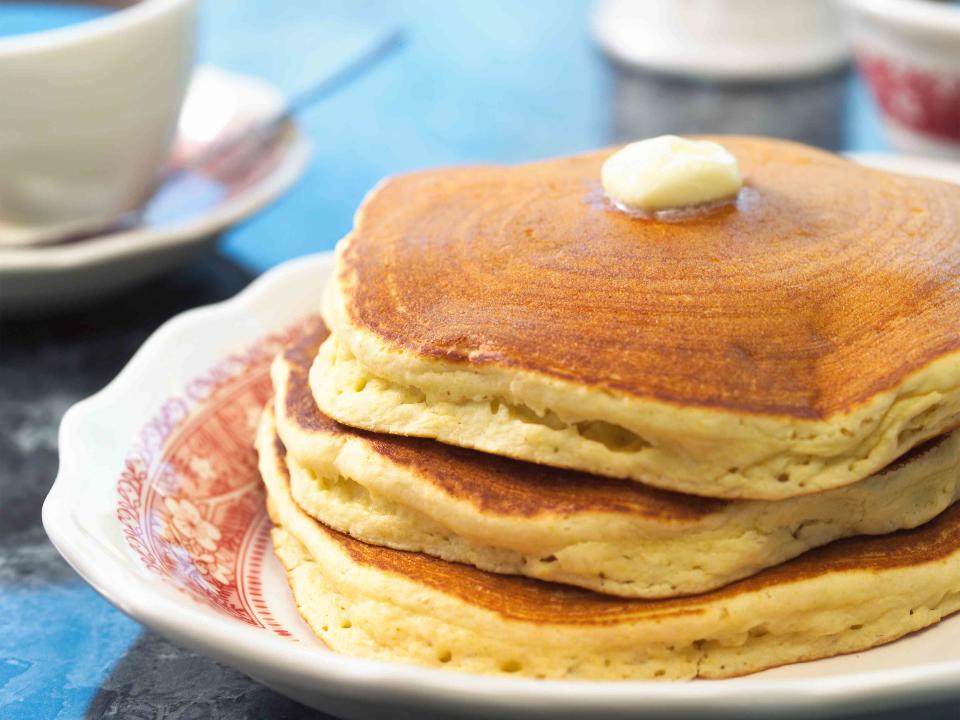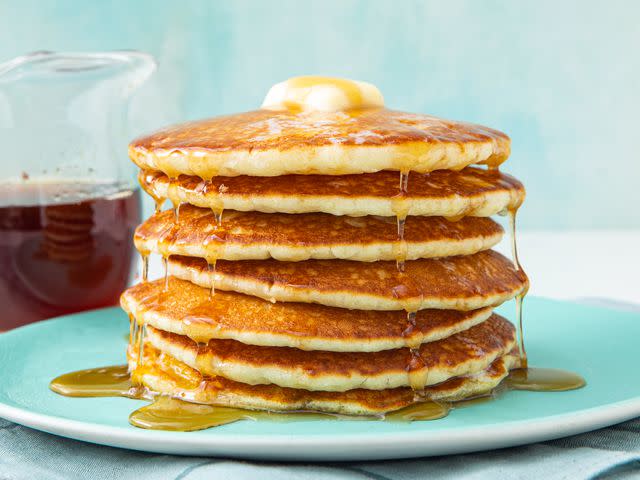Why Diner Pancakes Are Better Than What You Can Make at Home
We hate to say it, but it's true.

Getty Images/pjohnson1
Do you ever find that no matter how high you stack up your plate of homemade pancakes, they still seem to fall short? Even if you whip up a scratch-made batter and get the heat of your frying pan just right, the finished pancakes don’t look quite as enticing as the diner-style breakfast you’d been dreaming of the night before.
We’re not saying you can’t make top-notch pancakes at home (in fact, we have one of the best recipes on the internet to do so), but we are saying there’s something different about diner-style flapjacks that just tastes better—and we’re fairly certain it’s not just the side of bacon or the fun, retro ambiance.
Some of it can be chalked up to skill level—you’re comparing the expertise of chefs making hundreds of hotcakes a day to your dabbling in breakfast foods maybe once a month—but there are other factors involved beyond just proficiency. We determined exactly what makes the restaurant version supreme, and how to recreate diner-worthy deliciousness at home.
Why Pancakes Are Better From a Diner

Dotdash Meredith Food Studios
The Batter
Oddly enough, most of the ingredients in all pancake recipes are essentially the same: flour, sugar, eggs, milk or buttermilk, butter, and leaveners. Sometimes, restaurant batters will include half-and-half or heavy cream for richness or more vanilla for extra flavor, but generally, the simpler recipes make for the most classic cakes.
So, the overall difference in taste can come down to how you combine those same standard ingredients (cardinal rule: don't overmix)—and some diners have gotten it down to a science.
In an interview with Delish, IHOP’s vice president of culinary innovation revealed that the pancake house keeps the wet ingredients “ice cold” in the prepared batter. This eliminates any heat interaction with the glutens that might cause the batter to rise prematurely. That way, you get maximum fluff when the batter hits the hot griddle.
The Griddle
The absolute biggest advantage diners have in pancake production is the flat-top griddle. You know, the ones that take center stage in the non-stop assembly line of a diner kitchen? The massive stove top stays at a perfect medium-high heat all day long, so chefs can crank away without fear of “too pale” or “too dark” cakes going out to customers.
The consistently heated flat-tops also allow for large batter spread, which helps chefs achieve those massive plate-sized pancakes that make your eyes pop out of your head.
At home, you’re typically working off single burners, which don’t always provide an even heat distribution, leaving you with a pale-to-dark gradient or an inconsistently-colored batch. Similarly, if you use a skillet with a lip, the batter might climb up the edges of the pan and give you wonky-shaped cakes.
If you don’t have space for an industrial-sized flat top in your home kitchen, consider a large stovetop griddle instead that can evenly collect heat from multiple burners at once.
The Grease
The final diner secret IHOP revealed: Real pancake pros don’t use any oil or butter on their griddles. Instead, they make sure to use nonstick appliances so no extra fat is needed for the pancakes to lift off the hot pan. Why? Because cooking fat is what creates that marbled, bubbled look on the surface of your home-cooked pancakes. If you want a flawless golden brown finish, a fat-free fry is best (just make sure your pan is definitely nonstick!).
Bonus tip: The transfer of the batter onto the heat source should be considered as well. In diners, the batter rounds are usually portioned with deep ladles or even squirt bottles for uniform sizing and clean edges.
To your kids who are coming down for breakfast, no, these nuances won’t really matter. But, if you’re aiming for absolute pancake perfection, keep these tips in mind as you prepare your next batch of flapjacks this weekend.
Or, hop in the car and hit a real-deal diner—we won’t judge.
Read the original article on All Recipes.

